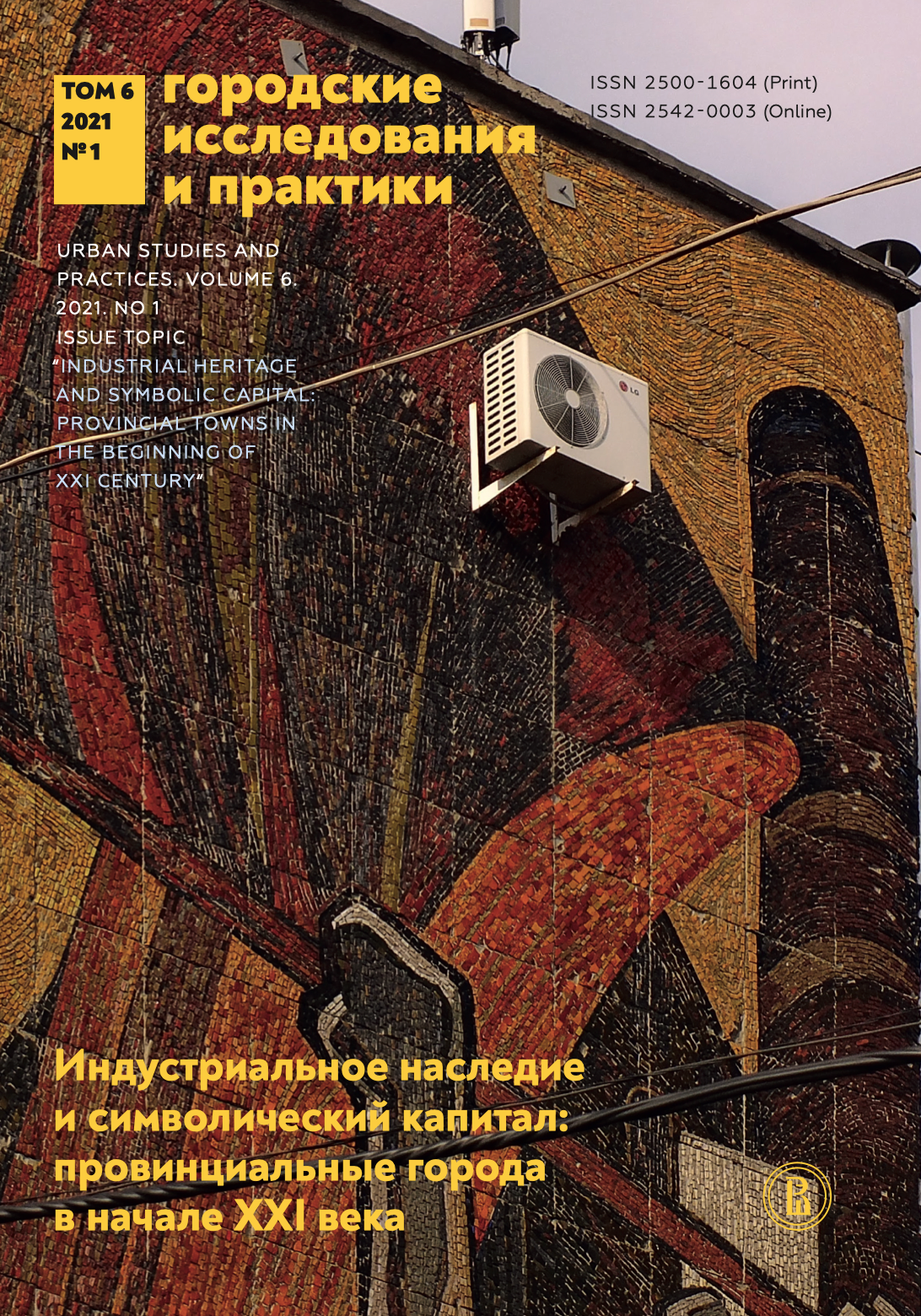Forum. Mining and Plain-Factory Civilizations of Russia: Industrial Heritage and Urban Identity
Abstract
Based on discussions with experts, this paper studies how the historical industrial heritage in Russian cities is treated today and what role it plays in shaping urban identity and environment. To focus the discussion, we chose two historical industrial regions with unique and recognizable characteristics: the “mining civilization” of the Urals and the textile “plain-factory civilization” of the north-east part of central Russia. According to the experts, the great industrial heritage of the Urals is gradually being assimilated by cities and incorporated into the urban environment and identity. Factory cities in search of identity are returning to their origins. But how does this process work? Does it fit, for example, into the dilemma of “demolition or revitalization”? What goals are set in this case? Does this happen in small towns of the region? The experts disagree. Experience shows that an important role is played by the industrial giants themselves, who, along with the cities, use their heritage. However, industrial identity is not dominant everywhere in the Urals, even while being supported by thriving industry. For example, in the Perm region it is complemented by the search for new meanings of contemporary culture. The fate of plain-factory civilizations is different. Factory cities, urbanistically and aesthetically shaped by their industries, became just cities. The crisis of the textile industry and the disappearance or decline of enterprises has left cities with an industrial heritage, but one which is mostly excluded from city life. Therefore, efforts to build local identity directly on this basis, are unsuccessful, which forces cities to look for workarounds to master this heritage, for example, through an emphasis on the unique constructivist architecture.
Downloads
References
Абашев В.В., Абашева М.П. (2012) Литература и география: Урал в геопоэтике России // Вестник Пермского университета. Серия: История. № 2. С. 143–151.
Алферов Н.С. (1960) Зодчие старого Урала. Первая половина XIX века. Свердловск: Свердловское книжное издательство.
Богословский П.О. (1927) О постановке культурно-исторических изучений Урала // Уральское краеведение. № 1.
Лотарева Р.М. (1998) Города-заводы России. XVIII—первая половина XIX века. Екатеринбург: Изд-во Урал. ун-та; Урал, архит. -худож. институт.
Лахтионова Е.С. (2016) История изучения индустриального наследия по материалам журнала «Архитектон: известня вузов» // История науки и техники в современной системе знаний: Шестая светодина конференция кафедры истории науки и техники, 9 февраля 2016. Екатеринбург: УНИ УПИ. С. 123–129.
Мальцев А.А., Мерсиер-Суисса К., Мордвинова А.Э. (2017) К трактовке понятия «реиндустриализация» в условиях глобализации // Экономика региона. Т. 13. № 4. С. 1044–1054.
Меньшикова И.В. (2007) «Текстильный край»? Проблемы и перспективы развития региональной идентичности в г. Иванове // Границы. Альманах Центра этнических и национальных исследований ИвГУ. Вып.1. Этническая ситуация в Ивановской области. Иваново. С. 115–126.
Солонина Н.С., Шипицына О.А. (2015) Историко-архитектурный потенциал индустриального наследия Среднего Урала // Архитектон: известня вузов. № 2 (50). Режим доступа: http://archive.ru/2015_2/8 (дата обращения: 21.03.2021).
Солонина Н.С., Шипицына О.А. (2018) Концепция архитектурно-презентационной актуализации Ревианско-Перекуральского исторически сложившегося промышленного культурного центра // Архитектон: известня вузов. № 2 (62). Режим доступа: http://archive.ru/2018_2/14 (дата обращения: 21.03.2021).
Трубина Е. (2013) Центр и периферия: между ростом и развитием // Логос. № 4. С. 237–266.
Шипицына О.А. (2012) Уникальный индустриально-ландшафтный ансамбль в Кущее: история создания и концепция сохранения // Архитектон: известня вузов. № 1. С. 56–73.
Шипицына О.А. (2020) История промышленного зодчества Урала: эволюция научных исследований // История и современное мировоззрение. Т. 2. № 1. С. 67–75.
Шипицына О.А., Солонина Н.С. (2018) Исторически сложившиеся индустриальные культурные центры Урала в контексте современной реиндустриализации // Урал индустриальный. Банунинские чтения. Индустриальная модернизация России в XVIII–XXI вв.: материалы XIII Всероссийской научной конференции, Екатеринбург, 18–19 октября 2018 г.: в 2-х т. Екатеринбург: УрО РАН. Т. 2. С. 399–413.
Ponomaryova A., Ryan B. (2020) Will Kyiv’s Soviet Industrial Districts Survive? A Study of Transformation, Preservation, and Demolition of Industrial Heritage in Ukraine’s Capital // Journal of Planning History. P. 1–49.
Dorel-Ferré G. (2018) Le Patrimoine des Villages Ouvriers et des Villes-Usines, vers une Analyse Planétaire // Industrial Heritage in the 21st Century. New Challenges. Proceedings of the XVIth International TICCH Congress 2015. CI-LAC, France. P. 108–113.

